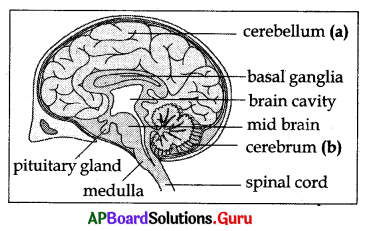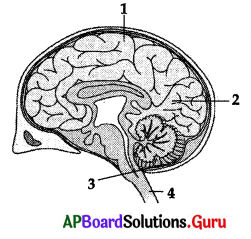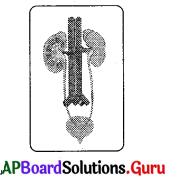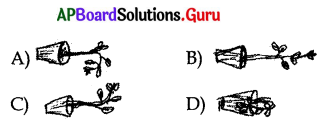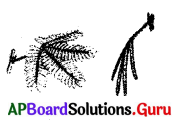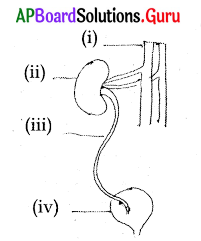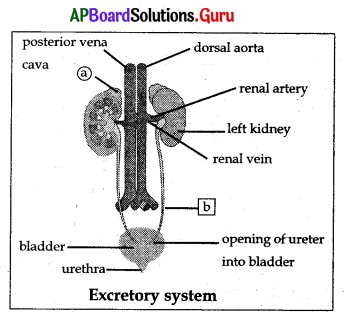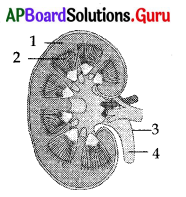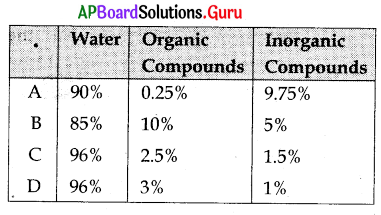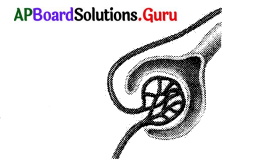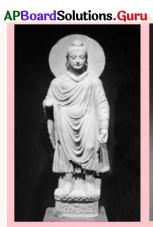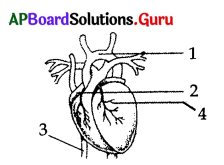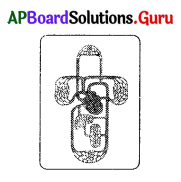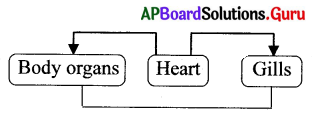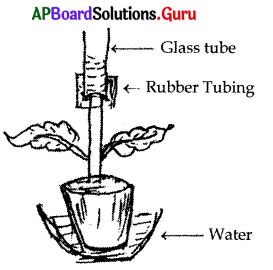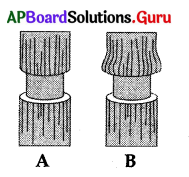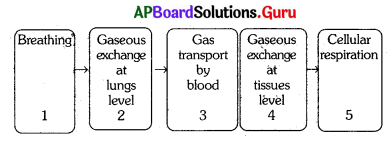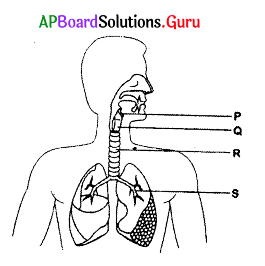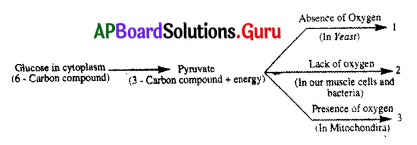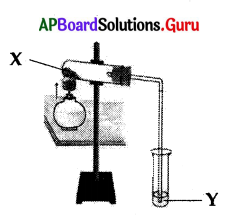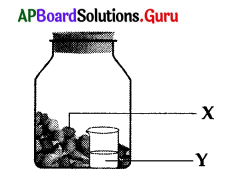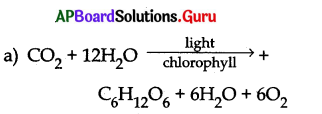Practice the AP 6th Class Social Bits with Answers Chapter 11 Indian Culture, Languages and Religions on a regular basis so that you can attempt exams with utmost confidence.
AP State Syllabus 6th Class Social Bits 11th Lesson Indian Culture, Languages and Religions with Answers
Choose the correct answer.
Question 1.
The special feature of India.
A) Socialism
B) Communism
C) Unity in Diversity
D) Diversity in Unity
Answer:
C) Unity in Diversity
Question 2.
Jesus Christ was born in
A) Raj agriha
B) Kunda
C) Bethlehem
D) Pataliputra
Answer:
C) Bethlehem
![]()
Question 3.
……………. is the holy book of Christians.
A) The Bible
B) Gita
C) Vedas
D) Quran
Answer:
A) The Bible
Question 4.
The religious books of the Hindu religion
A) Vedas
B) Upanishads
C) Ramayana, Mahabharata, Bhagavath geetha
D) All of these
Answer:
D) All of these
Question 5.
The religion that started in Arabia
A) Christianity
B) Islam
C) Hindu
D) Jainism
Answer:
B) Islam
Question 6.
The holy book of Islam
A) Quran
B) Bible
C) Bhagavadgeeta
D) Ramayan
Answer:
A) Quran
![]()
Question 7.
…………… wrote the book called Aryabhattiyam.
A) Aryabhatta
B) Ramanujan
C) Varahamihirudu
D) Sakuntala Devi
Answer:
A) Aryabhatta
Question 8.
Mahabharata was composed by
A) Viswamitra
B) Valmiki
C) Buddha
D) Vyasa
Answer:
D) Vyasa
Question 9.
The Vedas were taught in this form
A) Oral tradition
B) written
C) both A & B
D) None of them
Answer:
A) Oral tradition
Question 10.
“Ten Gurus” are related to which religion?
A) Hinduism
B) Sikhism
C) Christianity
D) Jainism
Answer:
B) Sikhism
![]()
Question 11.
Who is the head of the Roman Catholic Church?
A) Pope
B) Archana
C) Tirthankara
D) Prophet
Answer:
A) Pope
Question 12.
It is not a teaching of Jesus Christ.
A) We are the children of God
B) Lead a pure life without committing sins
C) Love your neighbor as yourself
D) All devotees of Muslims attempt a Hajj (pilgrimage) to Mecca at least once in their lifetime.
Answer:
D) All devotees of Muslims attempt a Hajj (pilgrimage) to Mecca at least once in their lifetime.
Question 13.
The Tripitikas are the holy books of
A) Islam
B) Christianity
C) Jainism
D) Buddhism
Answer:
D) Buddhism
Question 14.
The Indian sub-continent is the birthplace of
A) Hinduism
B) Buddhism & Jainism
C) Sikhism
D) All the above
Answer:
D) All the above
![]()
Question 15.
How many languages are recognized by the Constitution of India?
A) 21
B) 22
C) 23
D) 24
Answer:
C) 23
Question 16.
Ashoka used ……………….. script in all his inscriptions.
A) Picture script
B) Kharosthi script
C) Telugu script
D) Brahmi script
Answer:
D) Brahmi script
Question 17.
Choose the correct matching.
1) Aryabhattiyam A) Valmiki
2) Charaka Samhita B) Vedavyasa
3) Ramayanam C) Aryabhatta
4) Mahabharata D) Charaka
A) 1 – C, 2 – D, 3 – B, 4 – A.
B) 1 – C, 2 – B, 3 – D, 4 – A
C) 1 – C, 2 – D, 3 – A, 4 – B
D) 1 – C, 2 – A, 3 – D, 4 – B
Answer:
C) 1 – C, 2 – D, 3 – A, 4 – B
Question 18.
Choose the correct statement.
A: Language is a medium of communication.
B: Man is the only living being on the earth who uses language.
A) Only A is correct
B) Only B is correct
C) Both A & B are correct
D) Both A & B are wrong
Answer:
C) Both A & B are correct
![]()
Question 19.
A: We think, understand, and communicate with the help of the language.
B: Learning became easier with the evolution of language.
A) Only A is correct
B) Only B is correct
C) Both A & B are correct
D) Both A & Eyire wrong
Answer:
C) Both A & B are correct
Question 20.
Choose the correct matching.
1) Jainism A) Guru Nanak
2) Buddhism B) Vardhamana
3) Islam C) Jesus Christ
4) Sikhism D) Siddhartha
5) Christianity E) Prophet Muhammad
A) 1 – B, 2 – D, 3 – E, 4 – A, 5 – C
B) 1 – D, 2 – B, 3 – E, 4 – A, 5 – C
C) 1 – B, 2 – D, 3 – C, 4 – A, 5 – E
D) 1 – D, 2 – B, 3 – A, 4 – E, 5 – C
Answer:
A) 1 – B, 2 – D, 3 – E, 4 – A, 5 – C
Question 21.
Choose the wrong statement.
1) Religion – the belief in God
2) Script – the symbolic representation of language
3) Tirthankara – spiritual teacher of Dharma in Buddhism
4) Upanishads – a series of Hindu sacred written works
A) 1
B) 2
C) 3
D) 4
Answer:
C) 3
![]()
Question 22.
Choose the correct matching.
1) Tirumala A) Saudi Arabia
2) Sanchi Stupa B) Amritsar
3) Roman Catholic Church C) Madhya Pradesh
4) Mecca D) Seshachalam Hills
5) Golden Temple E) Vatican city in Rome
A) 1 – D, 2 – E, 3 – A, 4 – C, 5 – B
B) 1 – D, 2 – C, 3 – E, 4 – B, 5 – A
C) 1 – D, 2 – E, 3 – C, 4 – A, 5 – B
D) 1 – D, 2 – C, 3 – E, 4 – A, 5 – B
Answer:
D) 1 – D, 2 – C, 3 – E, 4 – A, 5 – B
Fill in the blanks.
1. Indian culture began about ……………….. years ago.
Answer:
5000
2. With the arrival of ………………… a new culture emerged in India.
Answer:
Aryans
3. In olden days people used pins to write on ………………….
Answer:
dried leaves
4. Valmiki’s Ramayana and Vyasa’s Mahabharata were written in ………………..
Answer:
Sanskrit
5. Aryabhatta wrote ……………….
Answer:
Aryabhattiyam
6. ………………, ……………….. books laid the foundation of Ayurvedam.
Answer:
Charaka Samhita and Sushruta Samhita
7. People who follow Jainism are known as ………………..
Answer:
Jains
![]()
8. Main goal of Jainism is to reach ………………..
Answer:
Moksha
9. In Jainism state of happiness is known as ………………..
Answer:
Nirvana
10. Texts which are MahaVtfa’s preachings are known as ………………..
Answer:
Angas
11. Spiritual Gurus for Jains are ………………..
Answer:
Tirthankaras
12. Height of Gomateshwara statue in Shravanabelagola is ……………….. feet.
Answer:
57
13. Gautama Buddha was bqrn in ……………….. and in ………………..
Answer:
Lumbini, Nepal
14. Gautama Buddha name when born was ………………..
Answer:
Siddhartha
![]()
15. Gautama Buddha got married at the age of ………………..
Answer:
18
16. Gautama Buddha’s son name was ………………..
Answer:
Rahul
17. The tree where Gautama Buddha got enlightenment is named as ………………..
Answer:
Bodhi Vruksha
18. According to Gautama Buddha final goal is ………………..
Answer:
attaining Nirvana
19. The holy books of Buddhism are ………………..
Answer:
Tripitikas
20. ……………….. and ……………….. are the important festivals of Hindus.
Answer:
Sankranthi, Diwali
21. Tirumala is located in ……………….. hills.
Answer:
Seshachalam
22. Unit of administration to maintain Tirumala is ………………..
Answer:
TTD
23. Founder of Christianity was ………………..
Answer:
Jesus Christ
24. Holy book of Christians is ………………..
Answer:
Bible
![]()
25. Famous church in the world is …………………
Answer:
Roman Catholic Church
26. Head of the Roman Catholic Church is ………………..
Answer:
Pope
27. Jesus was born in ………………..
Answer:
Bethlehem
28. ……………….. was the founder of Islam.
Answer:
Prophet Mohammed
29. Prophet Mohammed was born in ………………..
Answer:
Mecca
30. Mecca was in ………………..
Answer:
Arabia
31. The ……………….. is the holy book of Muslims.
Answer:
Quran
32. Prophet Mohammed left to ……………….. from Mecca.
Answer:
Madina
33. The followers who follow Sikhism are called ………………..
Answer:
Sikhs
34. The word Sikh means ………………..
Answer:
Student or disciple
35. The holy book of Sikhs is ………………..
Answer:
Guru Granth Sahib
![]()
36. The first Tirthankara was ………………..
Answer:
Bahubali
37. India is a land of ………………..
Answer:
diversities
38. ……………….. is the implying unity among the people of India.
Answer:
Unity in diversity
39. Dominant cultural trait of India is ……………
Answer:
Unity in diversity
Match the following:
Question 1.
1. Aryans [ ] A) Ayurvedam
2. Valmiki [ ] B) Jainism
3. Charaka Samhitha [ ] C) Yagnas
4. Mahavira [ ] D) Homeopathy
5. Gautam Buddha [ ] E) GuruNanak
– F) Rahul
– G) Ramayana
Answer:
1. C
2. G
3. A
4. B
5. F
![]()
Question 2.
Religions Books
1. Hinduism [ ] A) Bible
2. Islam [ ] B) Bhagavath Geetha
3. Christianity [ ] C) Quran
Answer:
1. B
2. C
3. A.
Question 3.
God Religions
1. Jesus Christ [ ] A) Hinduism
2. Siddhartha [ ] B) Christianity
3. Lord Krishna [ ] C) Buddhism
Answer:
1. B
2. C
3. A

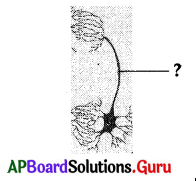

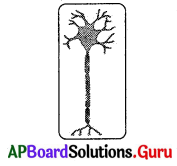
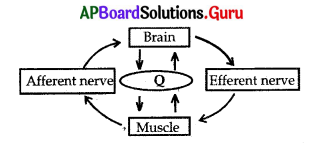

 Here A and B represents
Here A and B represents